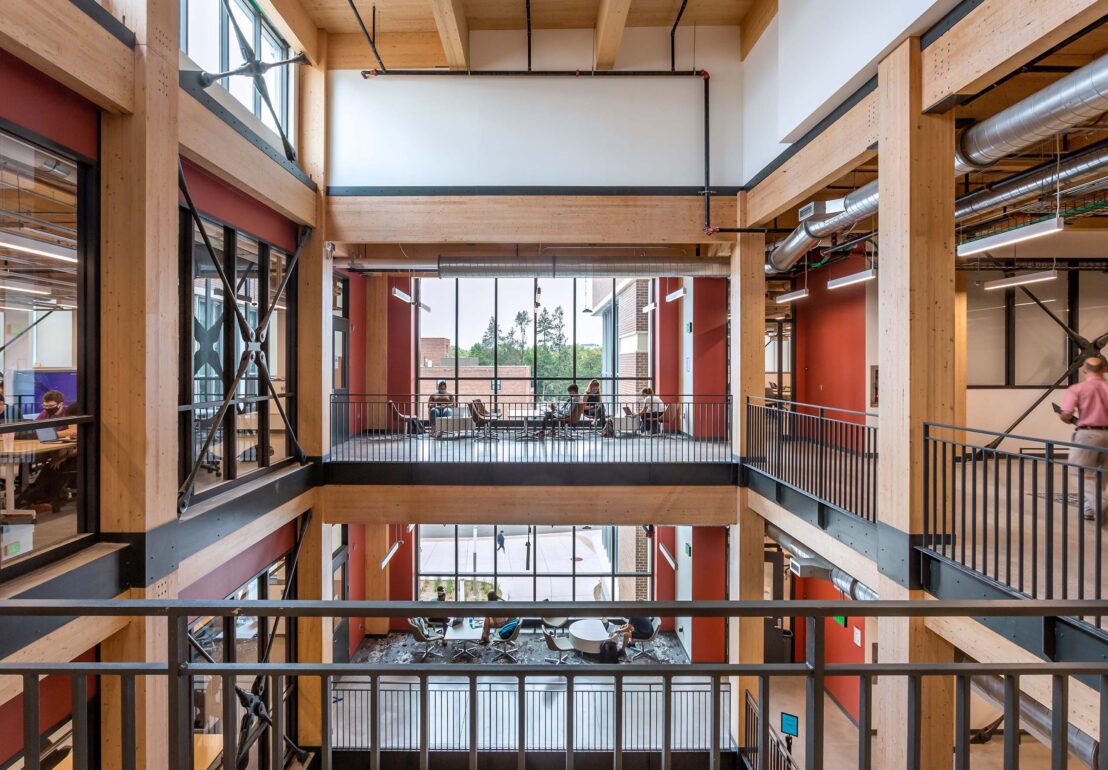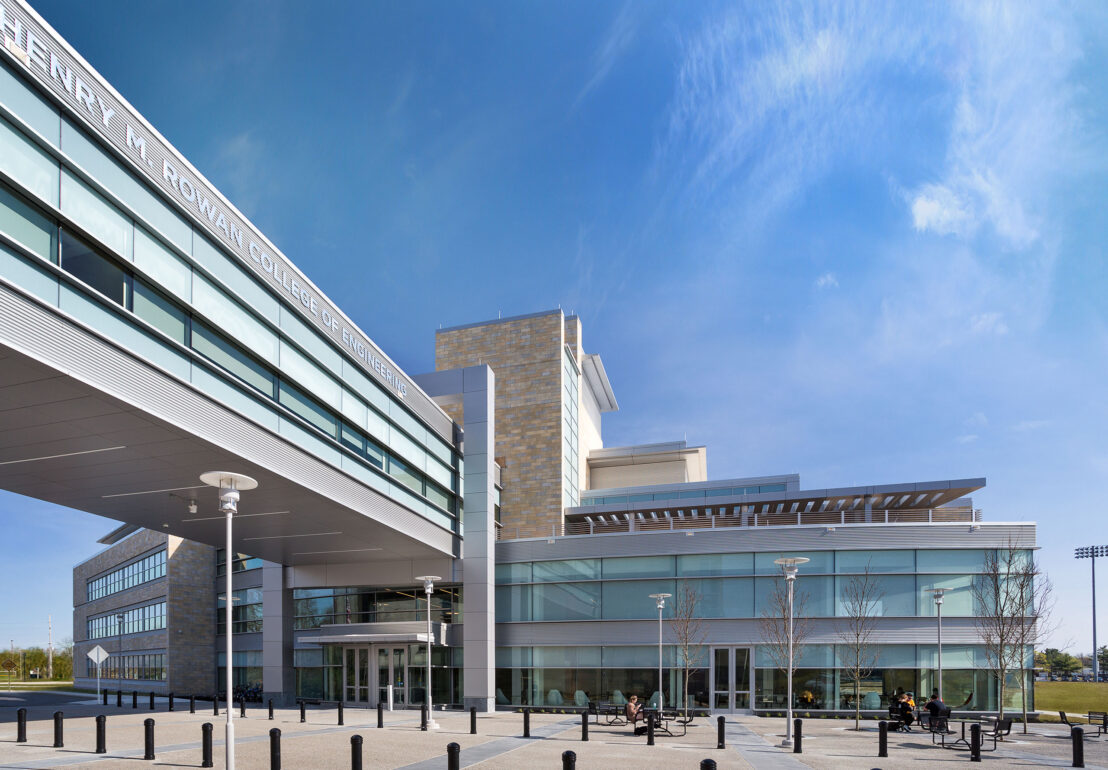Learning laboratories: the building as learning center
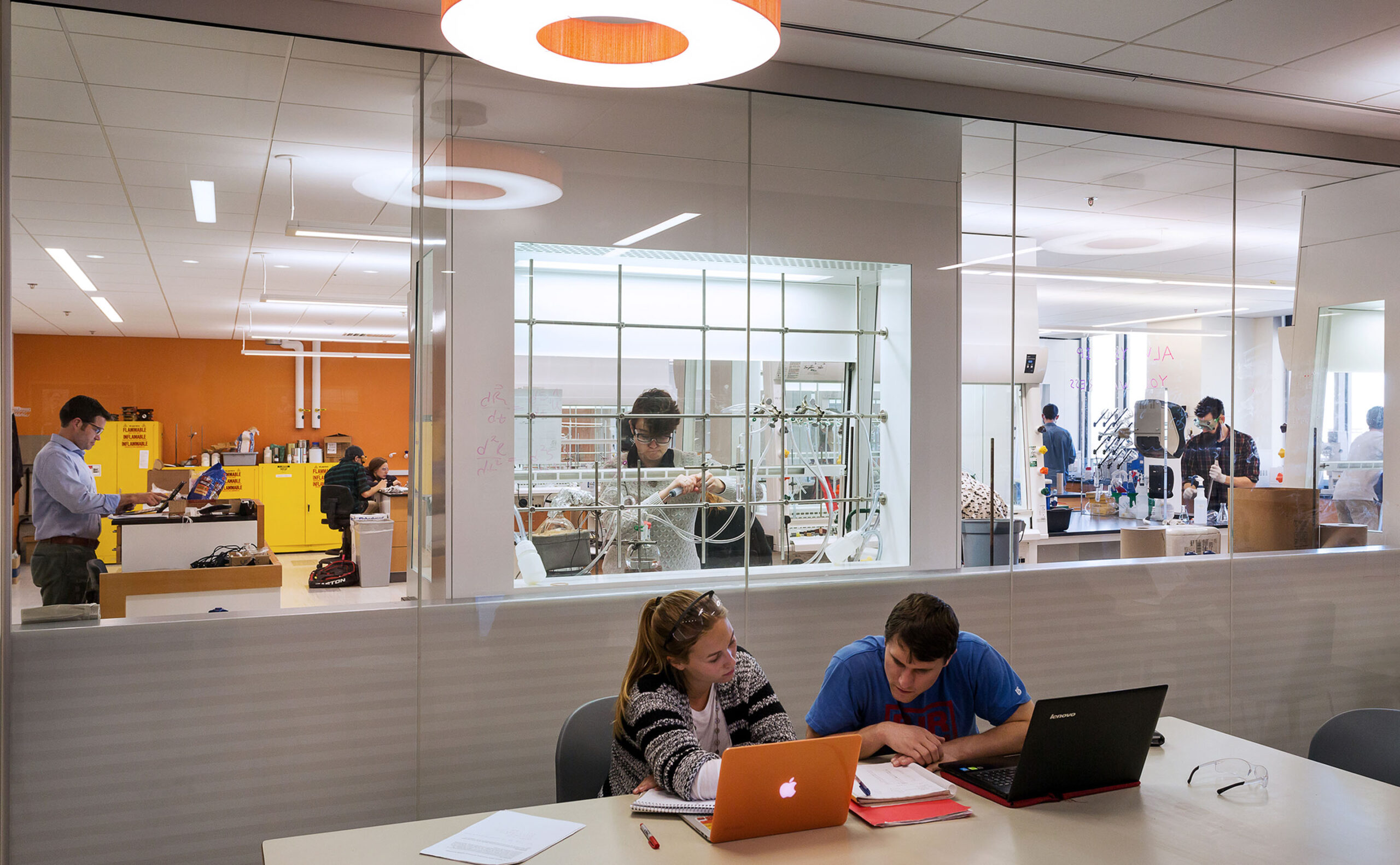
University of Vermont, STEM Building Complex
- Tags
- Design for discovery
Science, Health Sciences, and Engineering buildings for education are more than an assemblage of technical laboratory spaces and classrooms—they are Integrated Learning Centers.
Within these buildings, we intentionally design collaborative, interactive spaces beyond the labs themselves to enhance the learning experience.
Educational insights often take place in spaces ranging from a touch-down space outside a faculty office to a huddle alcove along a corridor, from meeting rooms to informal break-out areas, and from food service areas to a student commons. Including the right mix of these spaces boosts student success by increasing engagement, the sharing of knowledge, and crucially, a sense of belonging. A student-centric building with these features sends a strong message of educational support, affirmation, and a pride of place for students.
Examples of the variety of these spaces that a building can offer are presented below.
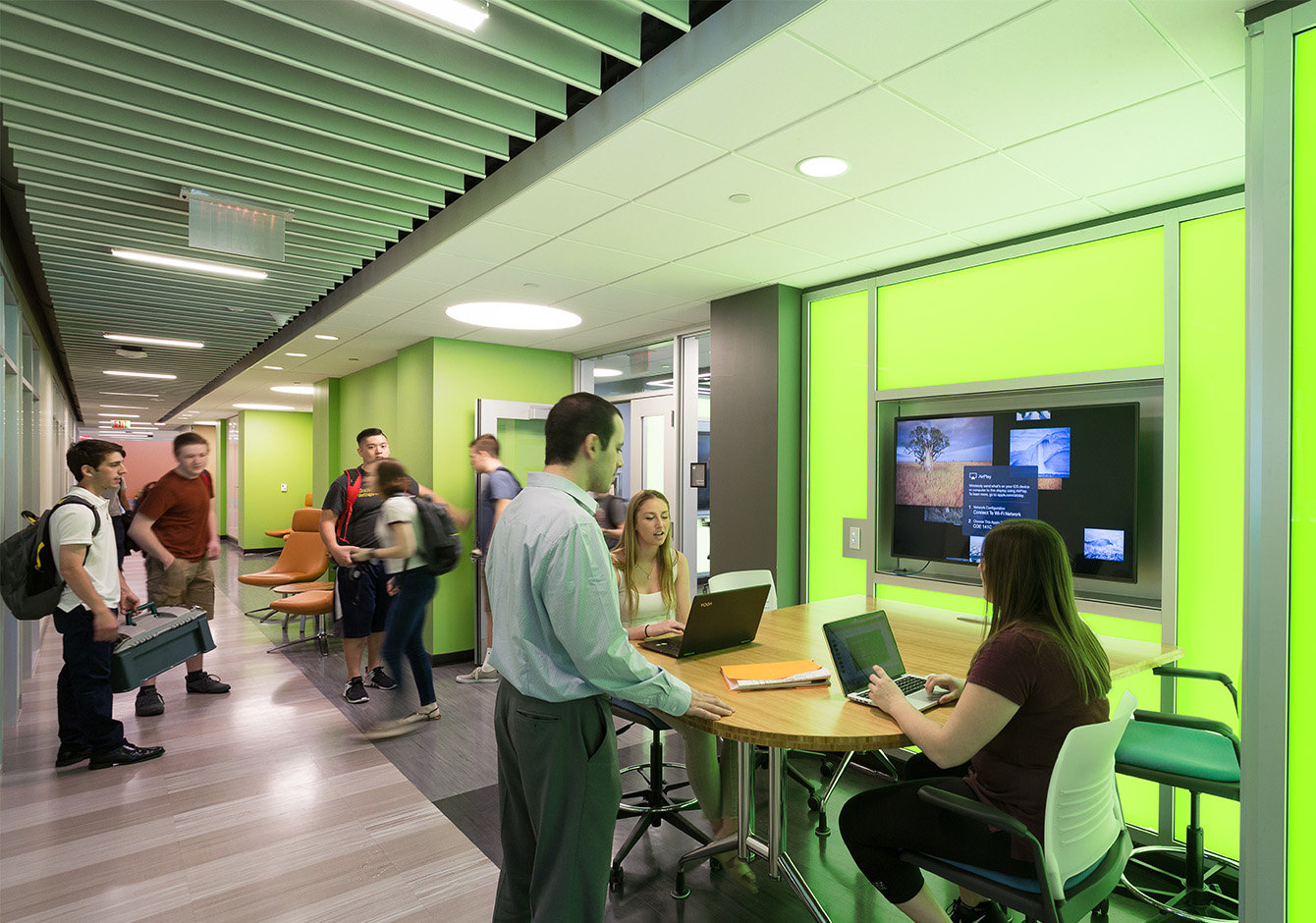
Rowan University, Engineering Hall
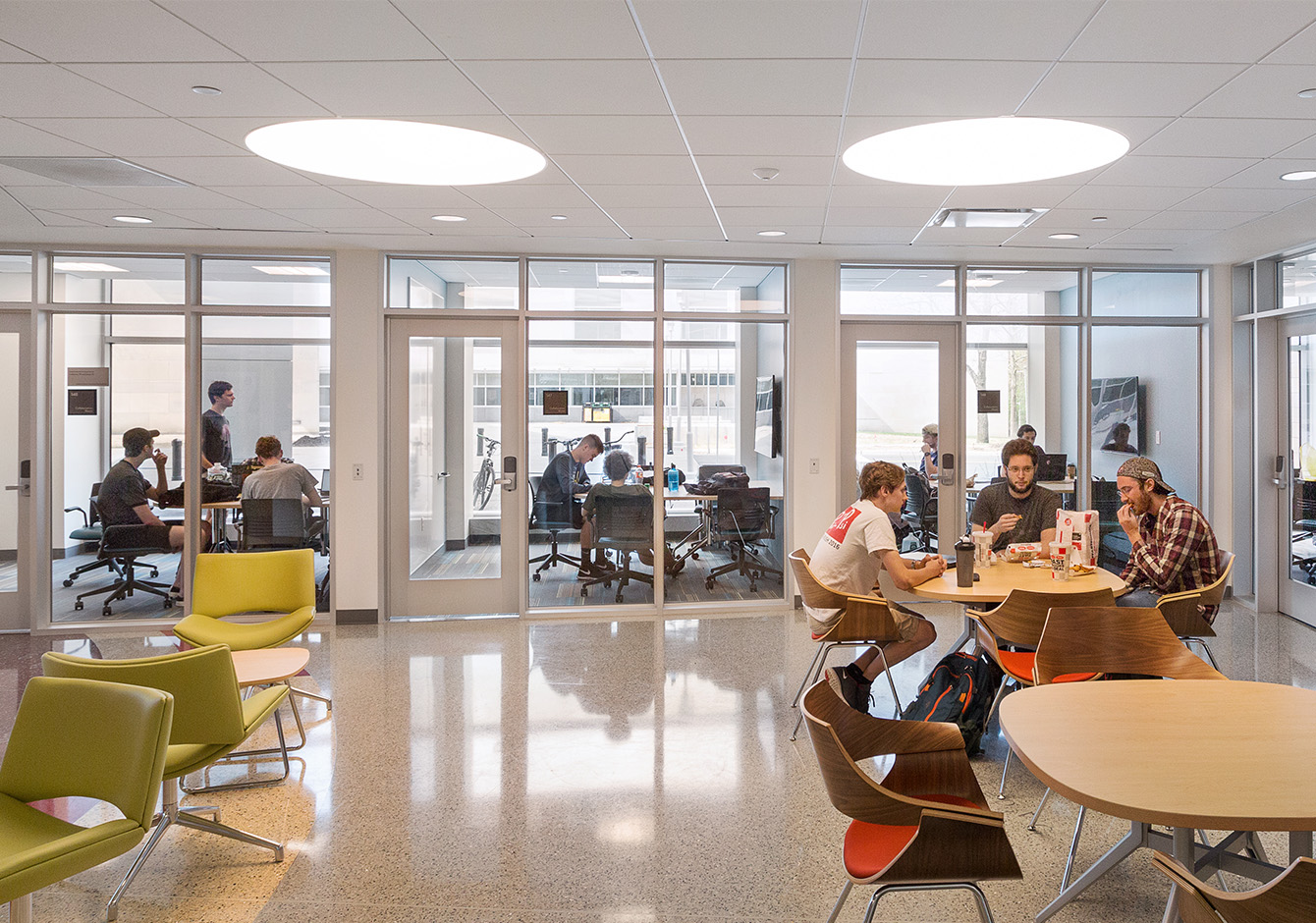
Rowan University, Engineering Hall
The Engineering Hall at Rowan University provides collaboration and social spaces throughout the entire building. A collaboration zone within the hallway doubles as both surge space between classes and a great place to meet and discuss a project. The variety of student interaction spaces in the building includes closed, four-person collaboration rooms and open areas for gathering and socializing.
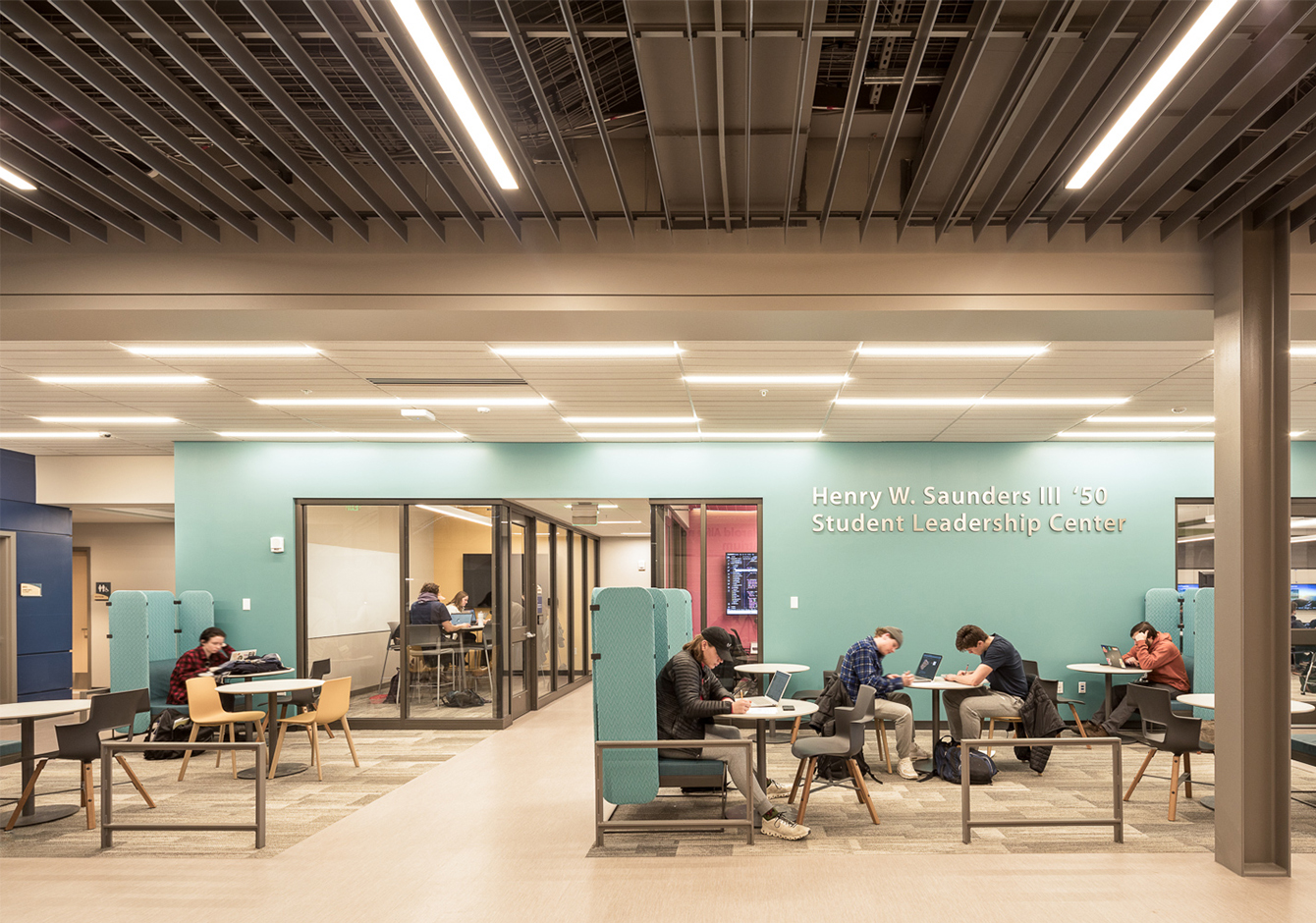
University of Maine, Ferland Engineering Education and Design Center
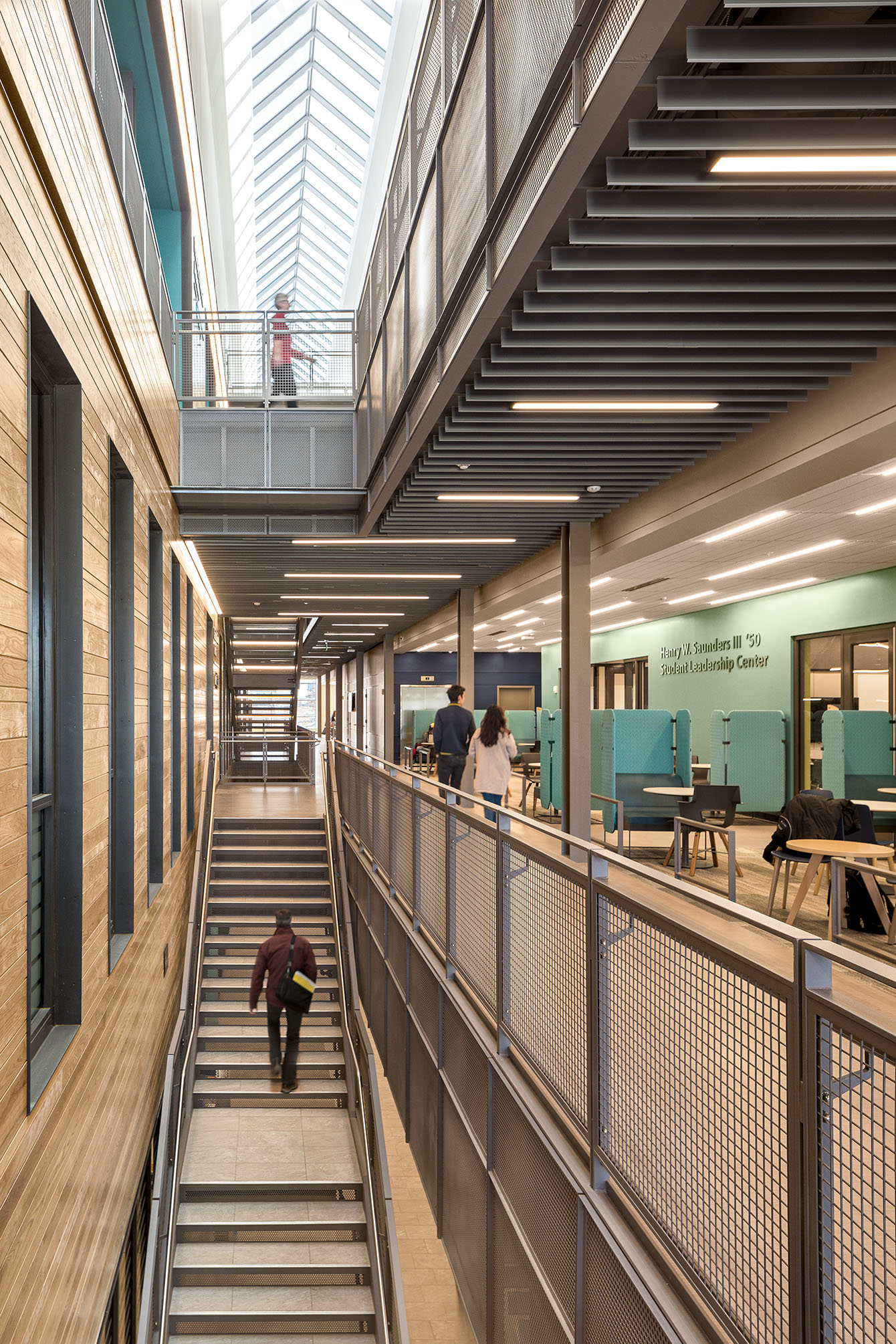
University of Maine, Ferland Engineering Education and Design Center
The University of Maine’s Ferland Engineering Education and Design Center includes a mix of informal and formal collaboration spaces. Students gather to study, work on projects, meet faculty mentors, and socialize. Collaboration spaces are featured along the skylit central corridor, increasing visibility and interactions.
